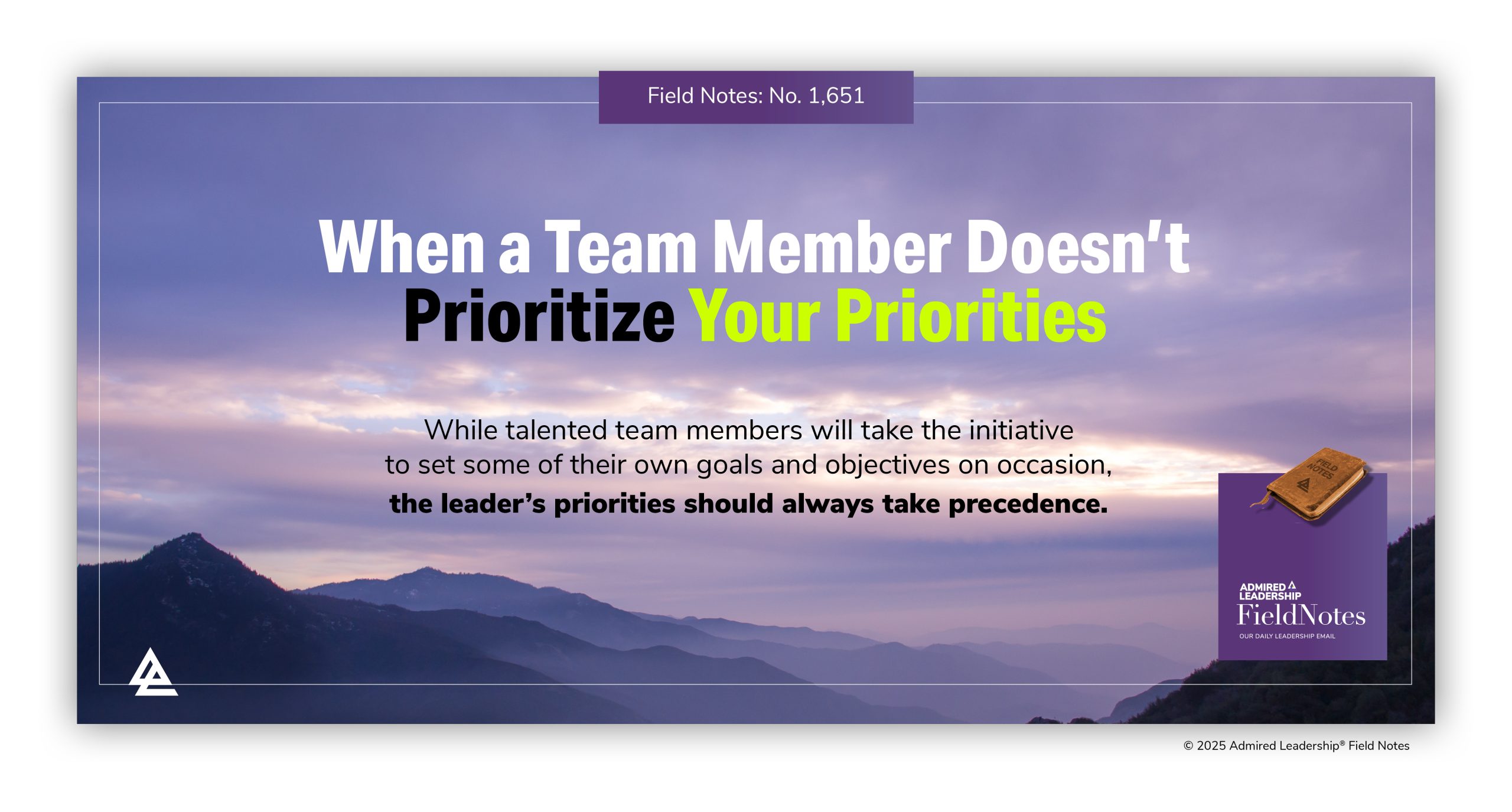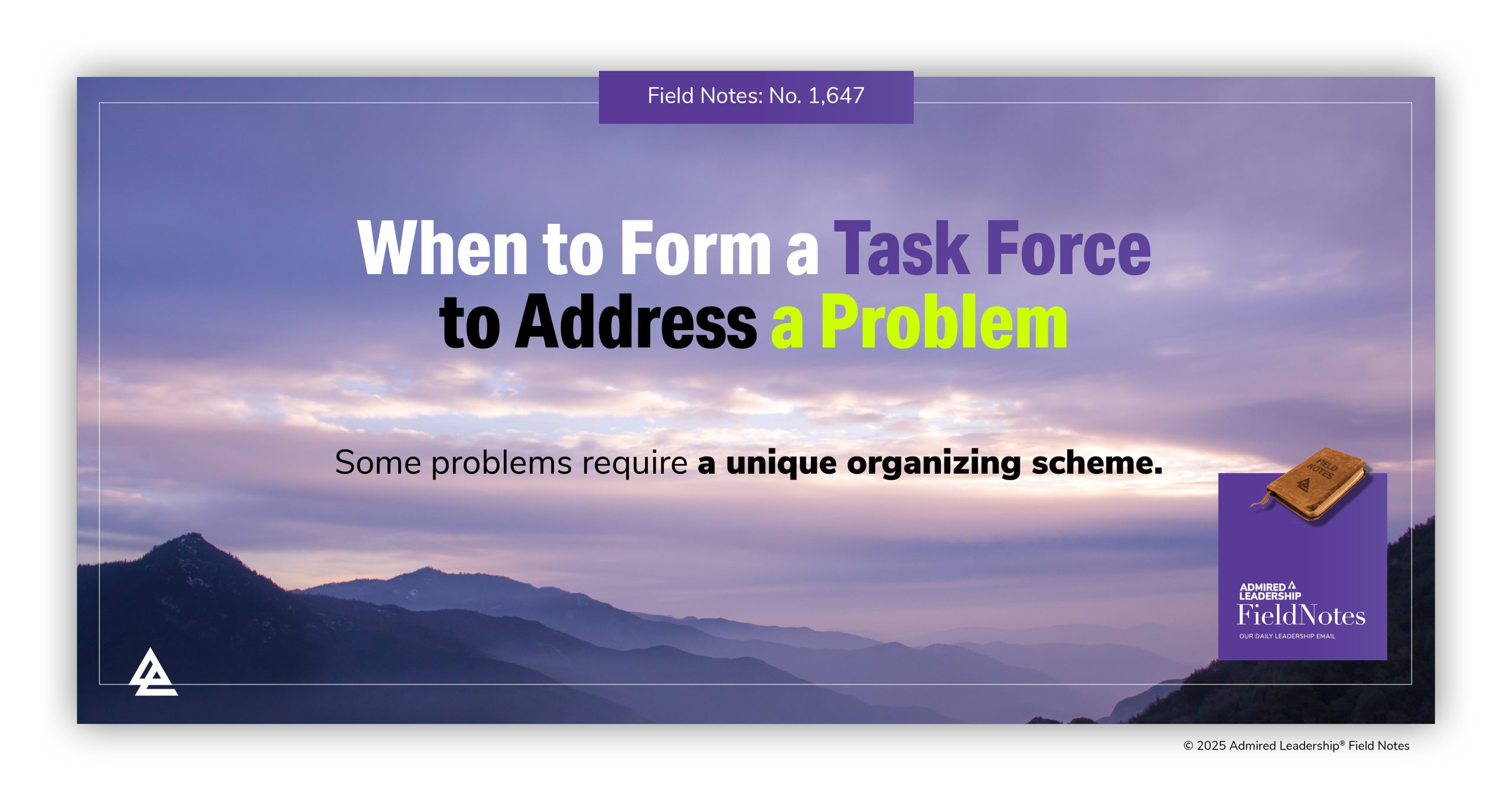Field notes
Field Notes
Our daily Field Notes email is just the kind of jumpstart you need. A fast read. Maybe less than a minute. Because sometimes it just takes one insight to change the trajectory of the day.
Search Field Notes
Jim Fish likes to ride along with trash crews and attend 1 a.m. safety briefings. Which might seem a bit odd for the CEO of the largest waste management company in the United States.
But Fish knows something about leadership that is worth remembering. The more status a leader holds, the more important it is for them to demonstrate their willingness to do what they ask of others.
While talented team members will take the initiative to set some of their own goals and objectives on occasion, the leader’s priorities should always take precedence. Rectifying this disconnect isn’t typically as simple as reminding them of the agreed-upon priorities or redirecting their focus.
A team member’s gap between skill and aspiration can create quite a challenge for leaders, especially if the person lacks some degree of self-awareness. When a team member aspires to great things but lacks the talent or potential to get there, leaders are faced with a difficult choice.
When to Form a Task Force to Address a Problem
Leaders Quickly Reframe Negative Promotion Decisions






